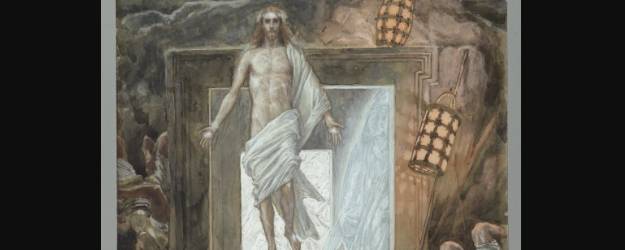What Is Jesus’s Risen Body Like?
Question: Dear Father Cush, As we approach the celebration of Easter, what does the Church teach about the nature of Jesus’s resurrected body? What did it look like?
Answer: According to Saint Thomas Aquinas, Christ’s glorified body has four principal qualities: impassibility, subtlety, agility, and clarity. These qualities come from Aquinas’s reflections in the Summa Theologica (especially in Part III, Question 54), where he draws from Scripture and philosophical reasoning.
The quality of impassibility makes Christ’s body free from suffering and decay. Aquinas argues that after the Resurrection, Christ’s body, as well as the bodies of the saints, will no longer be subject to pain, weakness, or death. Impassibility represents the perfect integrity of a body that has been fully redeemed.
Subtlety refers to the spiritualization of Christ’s glorified body. It’s the idea that His body, though physical, has been perfected by the soul’s influence to such a degree that it can penetrate barriers. This quality is referenced in Christ’s appearance to the disciples after the Resurrection, when He entered the room even though the doors were locked (John 20:19).
With agility, the glorified body has the freedom to move swiftly and effortlessly, not bound by physical limitations like weight or space. For example, Aquinas cites Christ’s ability to appear and disappear after His Resurrection, such as in His journey on the road to Emmaus (Luke 24:31). This agility reflects the harmony between body and soul, where the soul’s desires govern the movements of the body.
Clarity means the body shines with divine glory and radiance. Christ’s glorified body is bright and beautiful, mirroring His transfiguration, where “His face shone like the sun, and His clothes became as white as the light” (Matthew 17:2). Aquinas teaches that this quality manifests the glorified state as fully suffused with God’s light and grace.
These qualities emphasize how Christ’s resurrected body exemplifies the transformation awaiting all who share in His resurrection. For Aquinas, these glorified qualities are both miraculous and logical outcomes of a body completely united to a soul perfected in God’s grace.
What Are the Cardinal Virtues?
Question: Dear Father Cush, what are the Cardinal (or moral) Virtues? What does Saint Thomas Aquinas teach about these virtues?
Answer: Thanks for the question. I think it would be best if we let Saint Thomas speak for himself. Aquinas extensively discussed the Cardinal Virtues in his writings, particularly in his Summa Theologiae and his commentary on Aristotle’s Nicomachean Ethics. The Cardinal Virtues are four virtues that Aquinas identified as foundational to moral life and human flourishing.
Prudentia or Prudence is the virtue that enables practical reason to discern what is good in any given situation and to choose the right means to achieve it. Prudence involves not only the ability to make sound judgments but also to apply those judgments effectively in action. Aquinas considers prudence the “charioteer” of the virtues, as it guides and directs the other virtues in pursuing the good. Prudence includes the processes of deliberation, judgment, and decision-making, all oriented toward moral action.
Iustitia or Justice is the virtue that inclines the will to give each person their due, to respect the rights and dignity of others, and to promote the common good. Justice involves fairness, equity, and rectitude in human relationships, both in personal interactions and in social structures. Aquinas distinguishes between commutative justice (concerned with fairness in exchanges between individuals) and distributive justice (concerned with allocating goods and benefits within society). Justice is essential for maintaining harmony and order in society, ensuring that individuals and communities flourish in right relationship with one another.
Fortitudo or Fortitude is the virtue that strengthens the will to endure difficulties, persevere in the pursuit of good, and overcome obstacles and fears. Fortitude enables courage and resilience in facing both physical and moral challenges, even in the face of danger or adversity. Aquinas distinguishes between physical fortitude (courage in facing bodily harm) and moral fortitude (courage in resisting temptations and enduring hardships for the sake of moral principles. Fortitude enables individuals to endure suffering and hardship with patience and perseverance, trusting in God’s help and providence.
Temperantia or Temperance is the virtue that moderates and regulates the desires and pleasures of the senses, ensuring that they are directed towards what is good and in proper measure. Temperance involves self-control, moderation, and balance in the pursuit of pleasure and the satisfaction of bodily appetites. Temperance applies not only to bodily pleasures such as food, drink, and sex but also to the use of material goods and possessions. Aquinas teaches that temperance enables individuals to live virtuously, avoiding excess and indulgence while fostering a life of simplicity, moderation, and inner harmony.
Aquinas regards the Cardinal Virtues as essential components of a virtuous and flourishing life, guiding individuals in the pursuit of moral excellence and the attainment of true happiness. These virtues, when cultivated and practiced, contribute to the formation of a just and virtuous society grounded in human dignity and the common good.

Speak Your Mind